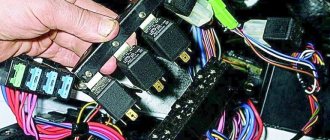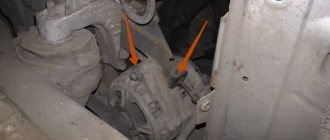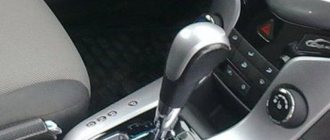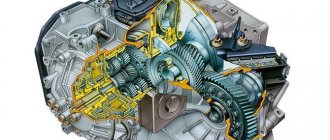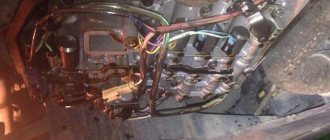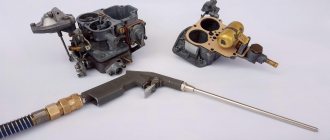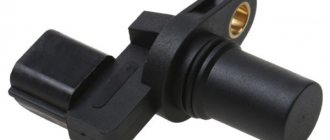An automatic transmission is a complex and expensive device on which the operation of the entire car depends. Its breakdown can happen unexpectedly, and every driver should know what to do in this case. And it’s even better to understand how to repair an automatic transmission with your own hands. Then, even on the road or in another city, you can always stay on the go!
How to understand that a breakdown has occurred?
Transmission problems are the first reason to talk about a malfunction. If you notice the problem at this stage, repairs will be easier than when the machine breaks down.
Normally, the automatic transmission operates silently and smoothly. Extraneous sounds when changing speed or an unpleasant smell are signs of a malfunction of the unit.
It’s much worse if it becomes more difficult to change gears, or if a gear stops working. The automatic transmission unit needs to be repaired urgently!
The driver should look under the car more often. If oil leaks from the gearbox, red spots will indicate this.
Also check the oil level regularly. Ideally, the composition has a translucent consistency, has a reddish tint and does not emit an unpleasant burning odor, otherwise the oil will need to be replaced because it affects the stable operation of the automatic transmission.
Installation stages
Before installing the transmission, a number of measures must be taken:
- It is necessary to thoroughly rinse the radiator, all pipelines and lines of the oil cooling system with clean gasoline;
- Service the torque converter and pour 1000 ml of transformer oil into it;
- Place the automatic transmission horizontally and on the input shaft, carefully install the torque converter (GDT) until it is completely seated.
Installation.
- When installing the automatic transmission, do not allow a large angle of inclination so that the unsecured gas turbine engine does not move to the side;
- Using guide centering pins, we connect the automatic transmission to the engine;
- We tighten two opposite bolts and check the tightness of its connection to the engine along the entire diameter of the automatic transmission;
- We check through the starter window that the torque converter is installed correctly; to do this, it must be turned along the axis;
- We connect to each other, rods, pipes, electrics, oil pipes;
- We check everything carefully again;
- Pour 5.5 - 6.5 liters (depending on the brand of the unit) of oil into the box.
Why do breakdowns occur?
Any malfunction is explained by operational errors. Most often they are the following:
- Braking or moving too hard will overload the transmission, and it may simply burn out.
- Insufficient oil level leads to problems. Overheating may also occur, which will be indicated by shocks during the trip.
- Slipping and traffic jams have a bad effect on the condition of the automatic transmission, as a result of which the unit overheats.
Fault diagnosis methods
The main thing in diagnostics is to collect the necessary information and interpret it correctly. Therefore, it is better to contact specialists. Determine what the problem is at a service station, and do the repairs yourself. Without the proper experience and equipment, you will waste a lot of time on diagnostics. There are mechanical and computer diagnostics.
General scheme of diagnostic procedures:
- check the oil,
- check the operation of the engine at idle speed, the connection points of electrical wiring and cables,
- determine error codes for the operation of transmission and engine control units (CU),
- check the box in a car without moving,
- check the automatic transmission while driving,
- check the pressure inside the control system.
Electronic control system and diagnostics of its malfunctions
If the cause of the malfunction is problems with the electronics, then most likely you will not need to dismantle and disassemble the automatic transmission. Diagnostics of faults in this system is carried out by the control unit. It monitors sensor signals, transmission ratios and output circuit resistance. Malfunctions of the following parts and assemblies may occur:
- input sensors,
- electronic control unit,
- control system actuators,
- violation of the integrity of electrical wiring connections.
The transmission computer receives signals from various sensors. If any parameters are abnormal, it stores a problem code (DTC) in memory. Such numbers can be deciphered using a special scanner.
Diagnosis of mechanical and hydraulic problems
These are the main problems of the automatic transmission itself. They are conventionally divided into three subgroups:
- Damage to friction groups, bushings and housings, calipers, planetary gears, pump and other mechanics.
- Transformer fault. This includes:
- broken wire splines,
- mechanical destruction of the blades,
- overrunning clutch,
- wear of the main locking clutch,
- depressurization of the piston seal.
- Problems with the mechanics of the hydraulic plate.
Common breakdowns
Repairing a Nissan automatic transmission or another model is expensive. Therefore, many car owners decide to repair the unit on their own. This is quite possible if you carefully study all the information.
There are quite a lot of videos on the Internet about do-it-yourself automatic transmission repairs, as well as articles with instructions for novice craftsmen. If you take all this into account, you can try to cope with any breakdown.
Most often, breakdowns are as follows:
- Brake band wear.
- Wear of the overrunning clutch and other parts of the torque converter.
- Damage to the control unit and other drive elements.
If oil leaks are found on the automatic transmission housing, you need to check the seals and replace the filter with technical fluid.
Changing the engine oil with your own hands - step-by-step instructions on how to correctly, quickly and easily change the oil in the engine and transmission (125 photos and videos)Do-it-yourself speed controller - how to make a simple adjustment device or smooth descent (120 photos)
- Can a non-owner apply for compulsory motor liability insurance?
Where to begin?
It is necessary to adjust the vehicle's idle speed and all its pedals. Next, you should check the fluid in the transmission. It should not have a repulsive odor or unnatural color. Such signs mean that the automatic transmission is seriously damaged. The presence of bubbles means there is too much liquid, causing it to foam. If the liquid is milky in color, this means it is leaking, to eliminate which you need to find the cable connecting the throttle valve to the box.
How to properly remove an automatic transmission?
Dismantling is similar to a manual transmission, but there are also nuances here. The box weighs a lot, and you need to think about how to lower it and where to put it. For work it is better to use a transmission jack. With its help, you can quickly and carefully remove the unit, because it is very sensitive and will fail if not handled properly.
Before dismantling work, carefully inspect the box and disconnect everything that connects it to other systems of the machine.
On some gearbox models, internal hex keys are needed to loosen the bolts. Chisels or other tools cannot be used instead.
It is not necessary to drain the oil, but you need to take care of a container where it will drain from the radiator. Either you need to plug the supply pipes, otherwise the oil will leak onto the ground. It is also important to disconnect cables, rods and other mechanical components. It is necessary to unplug the electrical connectors if the automatic transmission has electronic control.
The hydrodynamic transformer is removed along with the automatic transmission. Therefore, you need to find the bolts that secure it to the engine. Hold it when removing the box, because the breakdown of such a sensitive unit means large repair costs.
Do-it-yourself engine repair - major restoration and maintenance of an internal combustion engineDIY bumper: how to make a unique polymer bumper for a car at home (125 photos)
Do-it-yourself car painting - preparation for coating and the main stages of high-quality car painting (100 photos)
Each automatic transmission has a special mount, and the number of bolts is not the same. Therefore, it is important to always check that you have disconnected everything, so as not to damage the integrity of the wires and other elements by removing the box ahead of time.
Recommendations for use
- Eliminate slippage. The automatic transmission must be operated without slipping, otherwise this will significantly reduce its service life. This is especially true for those who like to drift on ice. Regardless of the road surface, the possibility of slipping is excluded.
- If this is your first time using a machine, keep in mind that the neutral speed on it does not just turn on. The neutral mode is activated only when the car is parked without the engine running; in other cases it cannot be turned on.
- Vehicles with automatic transmissions cannot tow other vehicles. The same goes for trailers. Installing a trailer or other vehicle in tow will negatively affect the service life of the vehicle as a whole.
- Automatic transmission never. Over time, this can lead to complete failure of the unit. The same applies to towing a car - if for some reason you cannot start, then your only option to get to the service station is to call a tow truck. If the box suddenly starts working in emergency mode, but at least somehow works, then you need to go to the nearest service station. We strongly do not recommend driving for more than 5 kilometers with an incorrectly functioning gearbox.
Repair features
It is recommended to repair the automatic transmission valve body yourself, armed with a manual:
- It is necessary to dismantle the box, wash the parts, and check the integrity.
- Units that have become unusable are replaced.
- After this, remove the pan and inhibitor block to remove the dirt inside.
- We disconnect the wires of the ring and push them inside.
- We take out the valve body by loosening the brake band.
- We check all gears.
- Now you need to open the oil pump to check the filter. Anything that has worn out must be replaced.
- We wash the valves. Often it is their sticking that causes improper operation. If the accumulator springs become unusable, they must be replaced.
- Now all that remains is to reassemble everything, replace the friction bolts and rings, and install the oil pump.
Now all that remains is to try to start the car and check if everything works. If there is no result, you should entrust the repair of the automatic transmission torque converter to specialists. Although drivers can often fix minor breakdowns themselves. The main thing is to identify the problem in time!
Installation of the box
Let's say the box was successfully removed and repaired. What's required next? Naturally, install the unit back on the car. Proper installation of an automatic transmission is carried out as follows:
- The assembled box is brought to the machine;
- The puller mounts are attached to it, and it rises up;
- At the same time, one person supports the torque converter, while others guide the box to the connection point;
- Next, very carefully, the automatic transmission, or rather the torque converter, is mounted on the splines of the engine shafts, the box is completely installed on the car and secured with previously unscrewed fasteners;
- After this, all that remains is to pour the required amount of oil into the box and restore the car to its original form.
Please note that after repairing the automatic transmission, it needs to be run in. Remember one simple rule - the more extensive the repair of the box, the longer it should not be heavily loaded. Often a break-in period of 1-2 weeks is enough.
Perhaps this concludes the most important information on the issues discussed today. We hope the material presented above was useful to you. Good luck in repairing and operating your car!
If you have any questions, leave them in the comments below the article. We or our visitors will be happy to answer them
